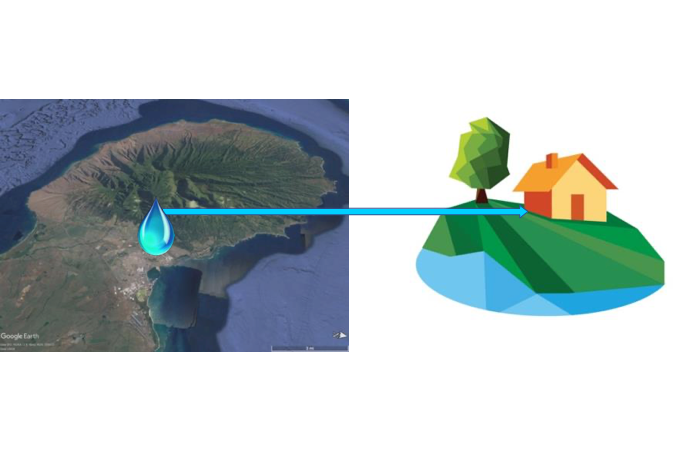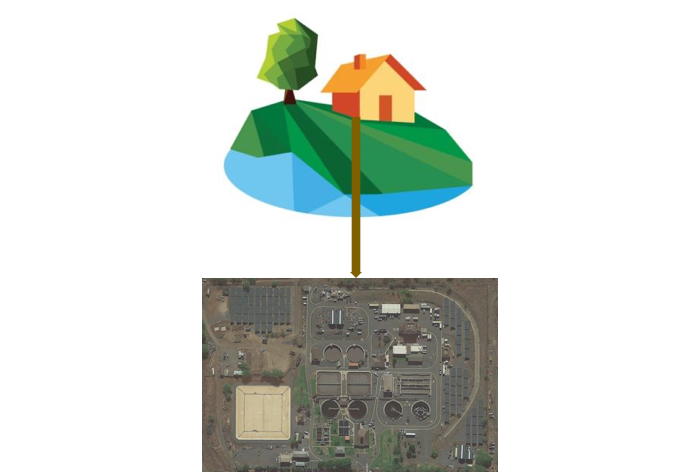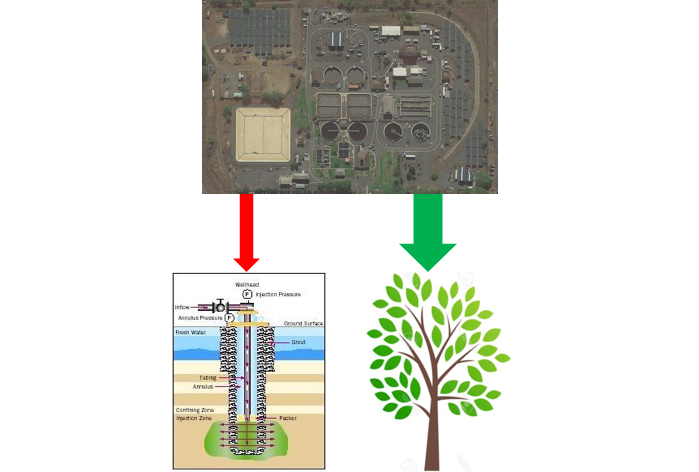-
Drinking Water Sources
Interesting Facts about Drinking Water Sources
From County of Maui: "If you live in Upcountry Maui, your water is surface water from the streams in East Maui. It's treated and disinfected at one of our three water treatment facilities (Kamole, Piiholo, Olinda) before it's delivered to your home. Customers in Haiku get their water from the Haiku or Kaupakalua wells and/or the Kamole Weir. Hana and Molokai also use groundwater. Lahaina has a mix of surface water and groundwater. The water treatment facilities for West Maui are located above Lahainaluna School and near the Kapalua Airport.
For Central Maui (Kahului, Wailuku, Waihe'e, Waikapū, Waiehu, Ma'alaea, Kihei, Wailea, Makena, Sprecklesville and Paia) your water is from surface and groundwaters of Na Wai Eha, Maui’s Four Great Waters of West Maui, which includes the ‘Īao Aquifer under the West Maui Mountains. That water is naturally filtered by lava rocks, disinfected, and sent to your home. A small amount of filtered surface water is added to the Central System at the Iao WTF."
The Iao and Waihee aquifer region has been designated by the Commission on Water Resources Management as a “water management area” due to over pumping. This points out that water reuse can alleviate stress on our primary drinking water source for Central & South Maui.
Na Wai Eha, The Four Great Waters of West Maui

- Municipal Disposal Methods
Kihei-Wailea municipal wastewater reclamation facility disposal methods
Resident Disposal Methods
65%Disinfected Irrigation Use
35%Infected Nearshore Injection Wells
Visitor Disposal Method
100%Infected Nearshore Injection Wells
On average, about 65% of resident wastewater is discharged into nearshore injection wells at the Kihei Wastewater Reclamation Facility, while about 35% is used for irrigation reuse. See detailed County of Maui plant flow reports.
"Interested in seeing present and potential future Kihei wastewater reclamation facility irrigation reuse locations?
- Injection Well Plume

Aerial photomosaic showing the Kihei infected injected municipal wastewater effluent plume as estimated by numerical modeling in South Maui, Hawaii
The infected effluent plume is roughly a mile long and a mile wide (0.93 mi, or 1.5 km) and flows beneath the urban strip seaward of the main highway. Colors represent effluent concentration, from 100 percent effluent at the plume core to 5 percent effluent at the outer plume margin. Popular nearshore recreations areas including Kalama Park and Cove Park are found within the modeled injection well plume area. (Hunt 2007) 5

Map showing modeled injection plume at Kihei, Hawaii.
This visualization reveals the injection well plume core and portrays plume extent to an outer limit of 5 percent effluent. The injection plume encompasses 0.93 miles of coastline and its central axis is aligned southwest, extending through the south part of Kalama Park. (Hunt 2007) 5
This model shows a visualization of the infected underground municipal wastewater plume in Kihei, Maui
An injection well is a hole in the earth with a pipe inserted that pumps wastewater hundreds of feet into the ground before it is released into groundwater. This cutaway diagram of a modeled underground wastewater plume underneath Kihei, Maui, shows the deep puncture of the well much like a giant hypodermic needle, with colored surfaces of equal effluent concentration are shown at 20, 40, 60, and 80 percent effluent, with the highest concentrations of wastewater shown in red found near the surface because effluent is freshwater so floats above saline nearshore groundwater. (Hunt 2007) 5
References:
- 1 - Secondary treatment - Wikipedia
- 2 - UV disinfected - Know your H2O
- 3 - Recycled Water for Reefs - NOAA.gov
- 4 - Summary of HI & CA Water Reuse Regulations - download document
- 5 - Ground-Water Nutrient Flux to Coastal Waters and Numerical Simulation of Wastewater Injection at Kihei, Maui, Hawaii - USGS
Do You Know What Happens After You Flush?
- Municipal Disposal Methods




